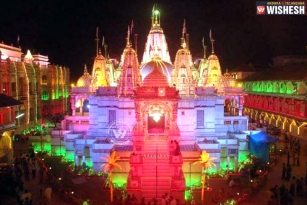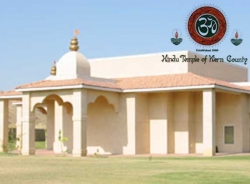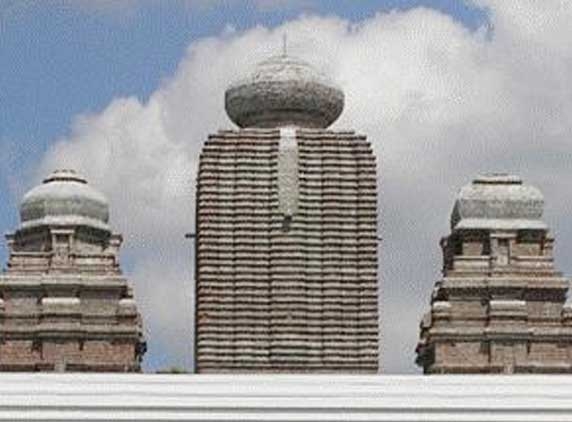
The current HCCNA Temple was consecrated in June 2005 andthe deities were installed with an elaborate week-long Vedic ceremony conducted by priests and spiritually energized by Swami Dayananda Saraswati, Swami Viditatmananda and other religious and community leaders.
The temple is called Sarvajana Mandir (Temple for all People). It is open every day in the morning and in the evening (all day on week ends) to provide a spiritual atmosphere for all people irrespective of their faith. The mission of the temple is to have spiritual and cultural upliftment for all relating to Sanatana Dharma and allied Hindu beliefs, while affirming the concept of global family.
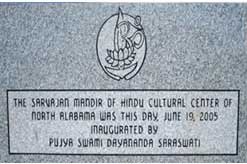 The current HCCNA Temple was consecrated in June 2005 and the deities were installed with an elaborate week-long Vedic ceremony conducted by priests and spiritually energized by Swami Dayananda Saraswati, Swami Viditatmananda and other religious and community leaders. The deities installed in the first phase are Lord Jagannath, Balabhadra and Subhadra in the center as you enter the temple, Lord Ganesha on the left side and Lord Venkateswara on the right. Other deities are installed on all three sides of the temple in June 2006 in three-day long Vedic ceremony. The deities are Sri Mahalakshmi, Radha Krishna, Ram Parivar, Navagrahas, Shiva Parvati (Lingaraj), Kali, Hanuman and Durga. It is planned to install Lords Mahavir and Parshwanath, Lord Buddha and Sri Saraswati in 2007.
The current HCCNA Temple was consecrated in June 2005 and the deities were installed with an elaborate week-long Vedic ceremony conducted by priests and spiritually energized by Swami Dayananda Saraswati, Swami Viditatmananda and other religious and community leaders. The deities installed in the first phase are Lord Jagannath, Balabhadra and Subhadra in the center as you enter the temple, Lord Ganesha on the left side and Lord Venkateswara on the right. Other deities are installed on all three sides of the temple in June 2006 in three-day long Vedic ceremony. The deities are Sri Mahalakshmi, Radha Krishna, Ram Parivar, Navagrahas, Shiva Parvati (Lingaraj), Kali, Hanuman and Durga. It is planned to install Lords Mahavir and Parshwanath, Lord Buddha and Sri Saraswati in 2007.
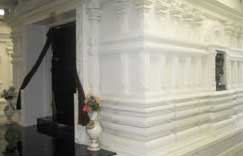 The temple architecture in the Hindu tradition is connected to astronomy and sacred geometry. The temple is a representation of the macrocosm (the universe) and the microcosm (the inner space). The temple consists of inner sanctums in which the idols are housed, with space for its circumambulation, and a congregation hall. The sanctum is crowned by a tower carved by skilled artisans called Shilpi’s. The tower called Shikhara or Vimana is visible from a distance as a symbol of upward human aspiration and as a landmark of the temple.
The temple architecture in the Hindu tradition is connected to astronomy and sacred geometry. The temple is a representation of the macrocosm (the universe) and the microcosm (the inner space). The temple consists of inner sanctums in which the idols are housed, with space for its circumambulation, and a congregation hall. The sanctum is crowned by a tower carved by skilled artisans called Shilpi’s. The tower called Shikhara or Vimana is visible from a distance as a symbol of upward human aspiration and as a landmark of the temple.




